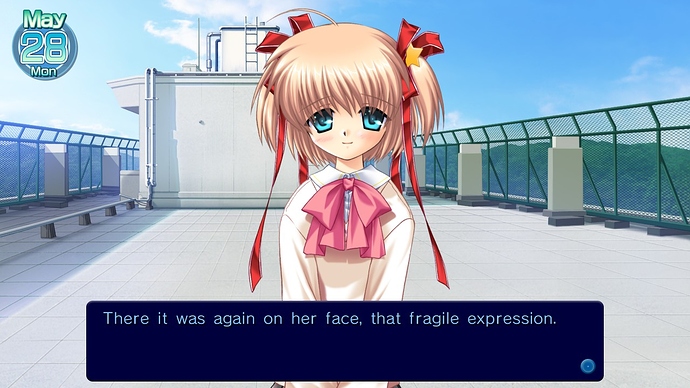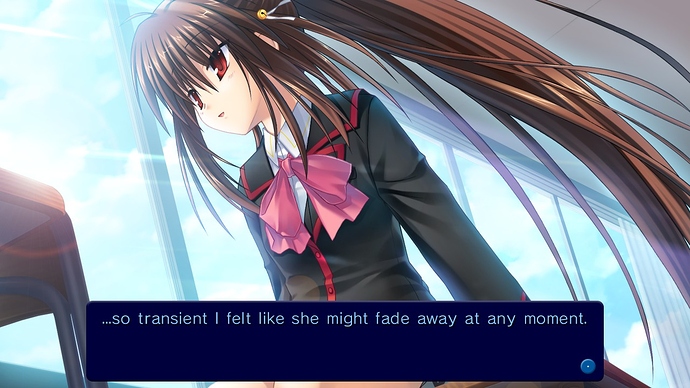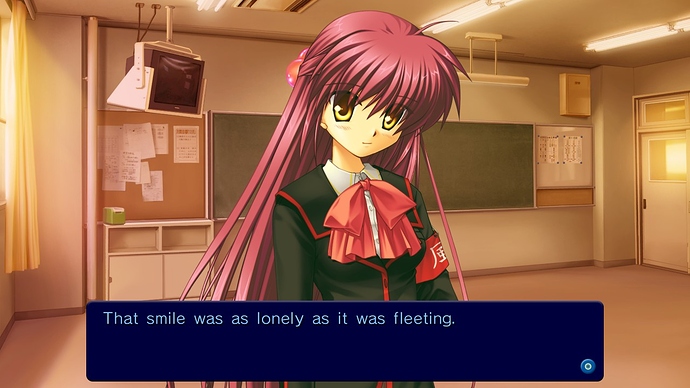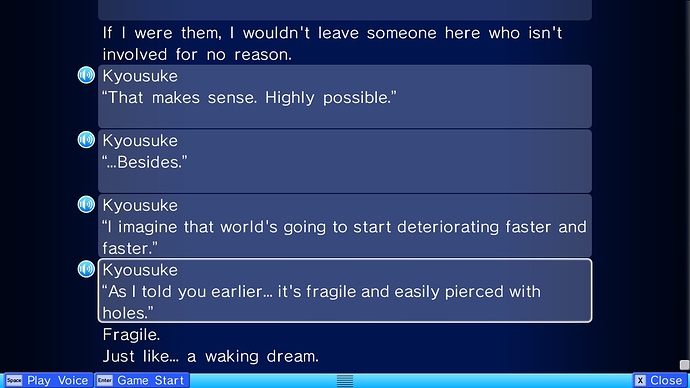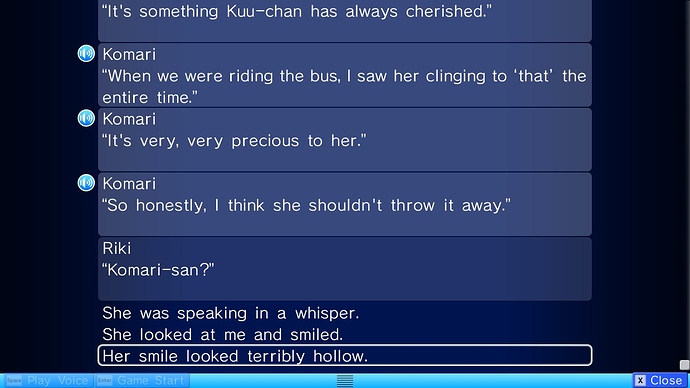So I’ve been slowly making it through Little Busters (bought it on the last Steam sale) and I’m on my second route now (Komari) with a question about the stuff with Kengo being the hero, jumping off the building, breaking his arm and joining baseball. That wasn’t in my first route at all (Mio) so I’m curious if this is a Komari route thing for some reason or if there’s actually events that change depending on how many routes if that have been completed. If the later that’s pretty cool and I don’t recall ever hearing of something like this happening before.
Well while this is “spoiler general” I will leave my answer to your question spoiler tagged, in case you don’t wanna ruin the surprise 
yes, that scene only happens after you finish your first route. Other scenes also come out as you finish more routes, so keep your eyes open 
ok I’ll save this then (I assume for after Refrain), although I have seen the anime so I might already know anyway.
Someone in the writing team seems to really have liked the word 儚い(hakanai); it’s translated as ‘fleeting’ or ‘fragile’ most of the time. It’s used in three scenes in the original game. EX then added six more, two of which includes an explanation of the word. Because the kanji is formed from the radicals for ‘person’ and ‘dream’, you can read it like “Man’s dreams are fleeting.”
The scenes where this word is used are as follows, starting with the original then the added ones.
Komari
Used to describe Komari in the scene where she tells Riki about finding her brother’s picture book. It’s used twice in this scene.
Mio
Used to describe Mio’s expression when she’s alone. (This happens right after the classmate bumps into Mio without noticing.)
Refrain
Used to describe Rin in the epilogue. This is probably the most well known line, as it’s the basis for the theory about everyone being dead at the end of the story which in turn is like the only reason Bokura no Asa exists.
Saya
Used as one of the wrong choices for what the rest of floor 6 will look like. This is the most detailed explanation of kanji’s meaning. It does also show up in the sex scene when Saya talks about how that scene is too movie-like and “real” spies don’t have the leisure for sexy times.
Kanata
Used to describe Kanata if you go the non-romantic route, but why would you ever pick that route.
Sasami
First used by Kyousuke, and here we have the lesser explanation of the kanji. They bring up the word two more times later in the route: First, when Riki remembers what Kyousuke said through the static; Second, before the final meeting with Kengo when Riki discovers that the town has disappeared. All times they’re describing the state of world.
Kud
During the alternate ending and only when you have Mio as roommate, Komari shows up to talk about the box Kud wants to throw away. It’s then used to describe her expression at the end.
Seeing as the word gets the most focus in Sasami’s route, it seems likely Tonokawa was the one to push the phrase. As for common patterns and conclusions, I dunno… When describing characters, it’s usually about them mulling over the conflict about to come. Other times it’s referring to the nature of the fabricated world. At the same time, it’s hardly like they always use that word when talking about those things. Let’s face it, when the word shows up only 16 times in a script longer than God’s engorged dick, it may not be the most important of devices. Often, it feels like something they just thought of later in production and decided to pack the expansion full of it.
